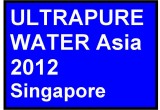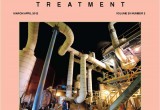March/April ULTRAPURE WATER Journal Focuses on Instruments
Online, April 15, 2012 (Newswire.com) - Instruments used in water quality monitoring are the focus of technical articles in the March/April ULTRAPURE WATER. The current issue may be read at www.ultrapurewater.com.
Topics covered in the issue include steam/water cycle measurement in power stations, as well as total organic carbon (TOC) measurement, sodium and silica measurement, and reverse osmosis system controls.
Author Mike Caravaggio power plant water in his article entitled, "Plant Steam/Water Cycle Make-up Water Treatment Raw Water Analysis." Mr. Caravaggio's article focuses on power plant designs with either drum boilers or once-through boilers. Water quality plays an important role as facility operators work to avoid problems from corrosion or scaling of boiler systems. The Electric Power Research Institute's (EPRI) water quality guidelines are examined by Mr. Carvaggio. The EPRI standards touch on sodium, chloride, sulfate, silica, total organic carbon (TOC), conductivity, and dissolved oxygen.
Author Tim Miller reports on work on monitoring TOC in high-purity water at the Birck Nanotechnology Center at Purdue University. Mr. Miller reviews the development of Purdue's Birck Nanotechnology Center and the facility's high-purity water treatment plant. The water plant is modeled after high-purity water systems found in commercial semiconductor facilities and is able to produce 13,000 gallons per day of SEMI Type E1.2 water. Treatment technologies used include reverse osmosis, ion exchange, and electrodeionization. Throughout its life since 2009, the plant has been able to consistently have TOC levels in the polish loop remain below 250 parts per trillion.
Author Morris Teo's technical article examines sodium and silica trace measurements in semiconductor water. Mr. Teo reports on technology to track silica levels down to 5 parts per trillion (ppt), as well as on-line monitoring of IX resin exhaustion. Topics addressed in the article include pH control, silver ions, and calibration, sample and instrument verification. One reason for measuring silica in semiconductor water is to determine instances when water quality is going outside of specifications.
Columnist William Harfst's Back to Basics article reviews important parameters to monitor for successful operation of reverse osmosis systems. They include: temperature, water flow, pressure, specific conductance, pH, and oxidation-reduction potential (ORP). For example, Mr. Harfst notes the effect of water temperatures above and below 77 degrees Fahrenheit on RO system operation.
In addition to the technical articles, the March/April issue includes an article by Steve Maxwell that examines trends impacting the water business. Topics addressed reviewed the effect of these issues: water recycling and reuse, technology development, industry investment, and consolidation.
Mr. Maxwell notes that water recycling and reuse remains one of the most robust sectors of the overall business. He distinguishes between "indirect" and "direct" reuse of wastewater. The first instance involves drawing from water resources where treated wastewater has been discharged. Examples would include rivers, aquifers, and lakes. "Direct reuse" refers to wastewater that is treated and then placed back into a water system for use. The article notes that more widespread practice of direct wastewater reuse would create business opportunities, as well as positively impact water availability issues.
The article also notes the influx of investors into the water business. "Over the last several years, the water business has also attracted the full range of other types of investors. For example, there are literally hundreds of private equity (PE) firms looking to establish a position somewhere in the broader water industry. As other popular investment opportunities have faded, and as the amount of cash held in private equity funds has exploded, a widespread interest and excitement regarding water-related businesses has developed. The water business is one attractive sector in which to explore for good investment opportunities," Mr. Maxwell wrote.
Some attractive features of the water business are as follows: potential for consistent growth, long-term stability, and the potential for consolidating industry segments.
ULTRAPURE WATER publisher Tall Oaks Publishing also publishes INDUSTRIAL WATER TREATMENT magazine. Each publication comes out six times yearly.
Additionally, Tall Oaks Publishing offers an extensive listing of industrial and high-purity water treatment books through its on-line bookstore. A complete listing of books and CDs offered is available at http://www.talloaks.com/Zencart/Index.php. The web site also offers details about Premier Subscriptions to INDUSTRIAL WATER TREATMENT and ULTRAPURE WATER. Information about advertising is available by calling 303/973-6700, or by emailing info@talloaks.com.


